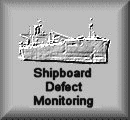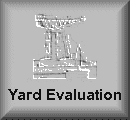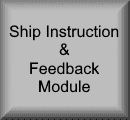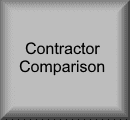

REFMAN is a software package that has been specially designed to allow technical people who are involved with the day to day running of ships, to take control of the ship repair process.
REFMAN has a Specification Generator for compiling and printing specification documents, Cost Control for comparing shipyard tenders and reporting drydocking costs and Shipboard Defect Recording & Monitoring for managing defects and other jobs initiated onboard.
There is also a Drawing Package for creating simple drawings, sketches and annotating photographs, a Time Management module for planning and keeping track of the progress of jobs, a Yard Performance Evaluation module for "grading" or "rating" the shipyards performance and a Contractor Comparison module for loading and comparing bids/quotations from specialist Contractors and other Suppliers of owners arranged items.

REFMAN's Specification Generator has been designed to allow people who are NOT word processing "experts" to quickly and easily produce well formatted, professional looking specification documents.
To achieve this, REFMAN encourages a high degree of standardisation, not just in the presentation, style and layout of these documents, but also in technical content.
Standardisation of content is achieved by making use of previously written job descriptions both as templates and as standard work descriptions that can be used over and over again.
This saves both time and effort when preparing new specifications and provides an opportunity to refine or "hone" each standard job description each time you use them which helps you produce "tighter" and "tighter" specifications.
Features include:
| Automatic Job numbering/re-numbering. |
| Instant recall of any previous job description. |
| Simple to use job-writing facilities. |
| Simple to use tool for line drawings, sketches & annotating photographs and scanned images. |
| Automatic formatting of printed specifications. |
| Flexible document printing facilities. |
| Automatic table of contents & list of attached drawings. |
 In the analysis and monitoring of
drydocking costs, REFMAN's Cost Control has been designed to allow technical people who are NOT "accountants" to quickly and easily forecast the cost of a refit or drydocking,
to compare competing tenders and to monitor and report on costs and keep track of changes during the
repair period itself.
In the analysis and monitoring of
drydocking costs, REFMAN's Cost Control has been designed to allow technical people who are NOT "accountants" to quickly and easily forecast the cost of a refit or drydocking,
to compare competing tenders and to monitor and report on costs and keep track of changes during the
repair period itself.
In a REFMAN analysis there are no complicated "accruals", no "reversals" and no "balances B/F". Instead, REFMAN simply uses the "best" cost information that is available at any particular time. If a job is complete, the "actual cost" is used, if a job is in progress, the "bid" is used, and if a job has been included as an "extra" and the only cost available is an "estimate", then that will be used.
By combining these together, at all times before, during and after the repair period, the Superintendent or Port Engineer gets the clearest possible indication of "how much has to be saved" or "how much is available to spend".
Features include:
| Ability to record estimated costs for yard & owners items, yard bid (including contingency for exclusions) and actual yard and owners costs for each job. |
| Analysis of job costs against "repair", "capital", "insurance", "guarantee" and/or individual "project" budgets. |
| Ability to send Specifications to the shipyard and for them to submit tenders electronically so avoiding the need to enter prices and comments manually. |
| Recording of yard tenders in tender currency with analysis in your own currency. | |
| Full range of on screen and printed reports in your own or tender currency. |
 Recognising the part which ship’s Engineers and Deck Officers play in initiating many of the 'repair' type items in a specification, REFMAN's Shipboard Defect Recording has been designed to provide a smooth transition for each specification item from "defect report", through to inclusion as a "job"; in a specification right through to its eventual completion.
Recognising the part which ship’s Engineers and Deck Officers play in initiating many of the 'repair' type items in a specification, REFMAN's Shipboard Defect Recording has been designed to provide a smooth transition for each specification item from "defect report", through to inclusion as a "job"; in a specification right through to its eventual completion.
This is achieved by providing an onboard system for recording defects in a format which can be transferred to the Superintendent or Port Engineer and incorporated directly into a specification document with little or no re-typing. This makes it easier and quicker for the Superintendent or Port Engineer to get ship initiated jobs into the specification.
Also, because the Shipboard Defect Recording Module is cross-referenced with REFMAN's Specification Generator, when the final specification is produced, the ship's staff can easily confirm that all of the defects which they have reported actually found their way into the specification.
Features include:
| "On screen forms" ensure ship's staff supply all the information that the Superintendent needs. |
| Automatic defect numbering. |
| Simple to use defect-writing facilities. |
| Simple to use drawing tool for line drawings, sketches & annotating photographs and scanned images. |
| Facilities for "private" or "departmental" work lists for "ship's staff" jobs. | |
| Optional module which allows onboard defects to be monitored from the office and provide feedback to the ship about how each defect is to be dealt with. |

REFMAN's Shipboard Defect Status Monitoring makes Shipboard Defect Recording a "two-way" process rather than the one-way operation when REFMAN’s original Shipboard Defect Recording module is used alone.
Defects are reported onboard using REFMAN’s Shipboard Defect Recording module as before except that the ship now also assigns a priority to each defect. Defects are transferred to the office where they can be reviewed, assigned to a Drydock specification or have a status and planned date assigned to indicate how and when they are to be dealt with.
The status, planned date and any "notes" explaining why a particular status has been assigned are then transmitted back to the ship. This provides the ship with confirmation that the reported defects have been received as well as providing positive feedback about how and when each one is to be dealt with.
As Defects are rectified they are marked as complete by ship's staff along with a date and code to indicate how and when they were actually dealt with. In this way both office and ship can see the current status of every reported defect.
Features include:
| Ship's staff can set "Priority" to indicate the urgency/impact on vessel operation. |
| Superintendent has access to a complete copy of the ship's defect list |
| Superintendent sets user defined "Status" (i.e. "Assigned to Contractor", "Office to arrange visit by Manufacturers Representative", "Ship's Staff to Rectify", etc.) and Planned Date. |
| Status and Planned Date are transferred back to the ship so ship's staff know how and when each item is to be dealt with. |
| A system that is designed to ensure that both Superintendent and Ship's Officers know the status and planned action for every reported defect. | |
| Optional Instruction & Feedback Module available which allows Superintendents to create lists of "Instructions" and other "Items for action by the ship" which appear as "Pending Items" in the ship's defect list onboard. |

REFMAN's Drawing module can be used in conjunction with both the Specification Generator in the office and the Shipboard Defect Recording module onboard.
This module allows the Superintendent and/or Ships' officer to easily produce simple line drawings such as a line diagram of a section of pipe or frames inside a tank, etc, to add dimensions and then insert these into a REFMAN job description. The drawing module also provides the facility to import photographs or scanned and other images that can then be annotated. So for example, given a photograph taken inside a tank, you could draw a circle around an area where cracking has occurred and add an arrow with text to draw attention to the relevant part of the photograph.
Once installed, this module is completely integrated with REFMAN so to add a drawing, you simply click on a button on the job text panel and you can begin drawing. On completion, click the OK button and the drawing is saved and automatically inserted into the Refman Job description. In designing the package, we have kept in mind that many REFMAN users may not have used a drawing package before so we have kept it simple. So you don't need to go on a course or "read the book" to be able to produce simple drawings.

REFMAN's Time Management module has been designed to provide people who are NOT project management "experts" with a quick and simple means of keeping track of the progress of jobs during a repair period.
To achieve this, you simply record the estimated start date & duration and optionally, specify which jobs must be completed before the next job can start, which jobs must at least have started before the next job can start and which jobs must be finished before the next job can be completed.
An option is available in the software to allow the shipyard to supply the owner with this information for each job electronically. These figures can then be loaded into the specification automatically. When used in this way, all the Superintendent has to do to complete the picture is to record times and durations for any "owners" arranged jobs that are to be carried out by sub-contractors.
Using this, REFMAN's Time Management module can then produce a simple time bar (Gantt) chart that gives a pictorial representation of when each job is expected to start, how long it should take and when it should be finished.
All the Superintendent needs to do to keep this up to date during the repair period is to record which jobs are complete, which jobs are behind schedule and use the built-in "Update" option to set an approximate percentage complete for the remainder. The built-in "Reschedule" option can then be used to produce an up to date time bar (Gantt) chart showing exactly what is outstanding.

REFMAN's Yard Performance Evaluation module allows the Superintendent to "rate" a yard's performance during and after a docking. Ratings can be given under any number of user defined headings (for example, Facilities, Services, Equipment, Response Speed, Cooperation, Communication, Engine Work, Steel Work, Safety, Prices, etc.) and the Superintendent can also record comments to qualify these ratings.
On completion of the docking, the completed ratings are stored centrally so that an overall average rating can be produced for each shipyard. This overall average can also be shown on the Yard Bid Comparison Report to assist in deciding which yard to nominate. You can also produce a ranked list which shows yards in order of their overall average performance which can help in deciding which yards to invite to tender when sending a specification out.

REFMAN's Ship Instruction & Feedback module has been designed to provide a simple means of ensuring that defects and other jobs which have been identified by the Superintendent or which have been brought to the Superintendents’ attention (after an audit or ship inspection for example) are recorded and dealt with via REFMAN’s Shipboard Defect Recording system onboard.
This is achieved by providing the Superintendent with the facility to send "instructions" to the ship which ship’s staff can then use to automatically initiate new items in REFMAN’s Shipboard Defect Recording system.
Jobs initiated in the Shipboard Defect Recording system in this way are automatically cross-referenced with the original instruction so that it is easy for the ships’ staff to track instructions and to check which have been processed and added to the ship’s Defect List, which have been completed and which are still outstanding.
When used in conjunction with REFMAN’s Shipboard Defect Status Monitoring module in the office, the Superintendent can also check the status of each Instruction and produce a list showing which are overdue.
Used in this way it provides a comprehensive system for dealing with defects identified during ship inspections/ audits, ad hoc defects and or jobs that are identified following a Superintendents visit to a ship. Most importantly it provides a means of ensuring that nothing is overlooked and every item is dealt with.

REFMAN's Contractor Bid Comparison module extends the facilities of the Cost Control Module to allow the loading/recording of bids/quotations from specialist Contractors so that these can be compared against one another and/or compared against quotations from Yards, on a job by job basis in a mix of currencies. Quotations from equipment/spare parts suppliers can also be compared in the same way if required.
The cost of owners arranged contractors will still be included in the specification as an estimated cost in your own base currency under your chosen Owner’s Cost Category, exactly the same way as they were previously. However with the Contractor Comparison Module, these costs can be obtained directly from the Contractor’s original bid/quotation without the need for a "one-off" manual conversion to your own base currency.
A Contractor Quotation Package can also be generated which allows the Contractor to enter their prices. This enables prices to be returned electronically and then loaded directly into the specification.

All our brochures are designed for Adobe Acrobat Reader X or later. If you do not have this click here  to get a free copy of Adobe Acrobat Reader
to get a free copy of Adobe Acrobat Reader
System Requirements: Win11/10/8/7 (64 bit) with 4GB RAM or Win10/8/7 (32 bit) with 2GB RAM and 500 MB Free Hard Disk Space.
Minitech Systems Limited. Bridle Way, off St. Vincents Close, Girton, Cambridge, CB3 0PB, U.K
Phone: 01223 277049
From Outside U.K. Phone: +44 1223 277049
Email: sales@minitech-systems.com